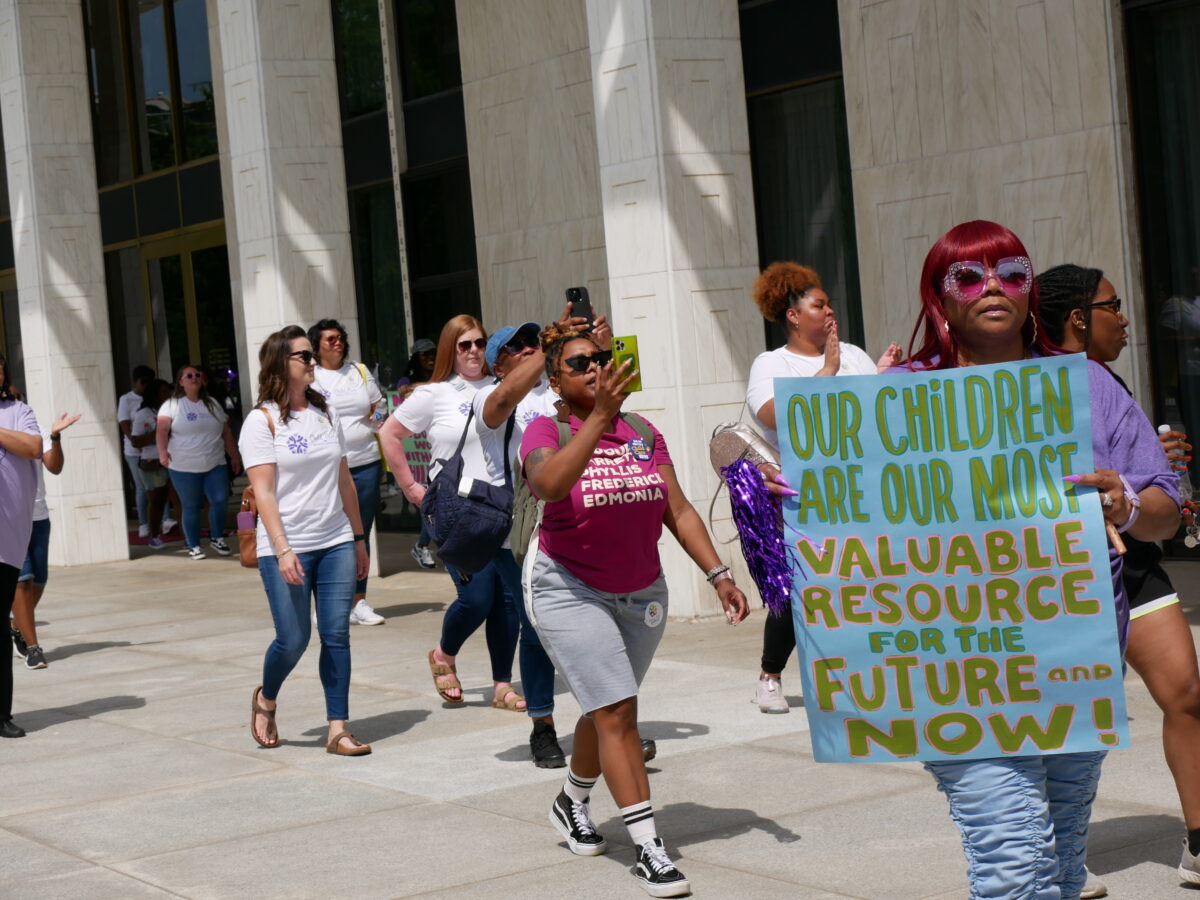
A financial “cliff” hangs over infants, toddlers, and parents in North Carolina. When the pandemic-relief infusion of federal funding for child care and preschool runs out, the state does not have a sufficient budget to buttress a system in crisis.
The well-being of America’s young children, especially in low-income households, has already suffered from other sorts of funding cliffs. Especially dramatic, as the U.S. Census reports, is the stark rise in the child poverty rate after the refundable tax credit of 2021 expired.
Under the American Rescue Plan, the federal government both increased the annual amount of the child tax credit and allowed families to receive monthly payments of $250 to $300 per child. It worked.
Most families spent the money on everyday basics of food, clothing, and housing. And the United States cut poverty in half among children 18 years and younger, down to 5.2% in 2021, the lowest level recorded by the Census.
In reporting on poverty, the Census Bureau uses two calculations — the official poverty rate based on cash income and household size, and the supplemental poverty measurement (SPM) that takes into account Social Security, energy assistance, SNAP food stamps, housing subsidy, as well as the child tax credit. In North Carolina, for example, the Census, using a three-year average for 2020, 2021, and 2022, reports 1.4 million people in poverty under the official rate and 1.09 million under the SPM.
Even though it worked as projected, the expanded federal child tax credit lasted only one year. A divided Congress did not step back from that cliff to revive the measure.
The upshot for the nation as a whole, Census reports, was that the “SPM child poverty rate more than doubled, from 5.2% in 2021 to 12.4% in 2022 … This represents a return to pre-pandemic SPM child poverty levels, as the 2022 rate was not statistically different from the 2019 rate (12.6%).”
Of course, the extent of child poverty has implications for public education. As the late summer opening of schools approaches each year, good-hearted people in religious and civic organizations collect backpacks and supplies to give to students in need. But these students also carry stresses and strains from living in economic straits into the classroom.
In North Carolina, as the N.C. Poverty Research Fund points out, more than four out of 10 children live in neighborhoods of concentrated poverty. Residential clustering gives rises to a plethora of high-poverty schools, which find it difficult to attract and retain high-skilled teachers.
In the 2023-25 state budget just adopted, the Republican legislative majority declined to fund the two-year segment of the “comprehensive remedial plan” proposed by Democratic Gov. Roy Cooper in response to state court rulings. At the heart of that plan are measures to address low-performing and high-poverty schools.
The Republican majority offers a modest increase of $75 million over two years in the state’s child care subsidy program in a provision attached to the abortion-restriction legislation. The budget also redirects block-grant funds to supporting the salaries of child care employees – until the federal money runs out in 2024.
But as Liz Bell has reported extensively for EducationNC, the budget contains inadequate state funding to avoid the cliff ahead: no extension of stabilization funds, no additional operating support for Smart Start, no effort to raise paltry pay for early childhood teachers, no expansion of NC Pre-K, except to permit more students per teacher in a classroom.
Of course, its level of commitment to early education has both economic and educational implications for the state. Quality child care and preschool enable parents to work, not the least women seeking to escape poverty. Early learning and emotional development lead to improved school readiness, less poverty, and ultimately more educated citizens, workers, and leaders.
And yet, for tens of thousands of North Carolina families, high-quality child care is either too expensive or in too little supply. That’s a real-life “cliff” that a strong North Carolina has the ability to avoid.
Recommended reading



